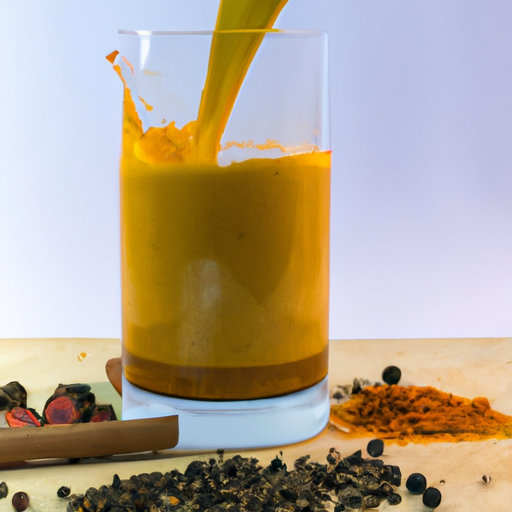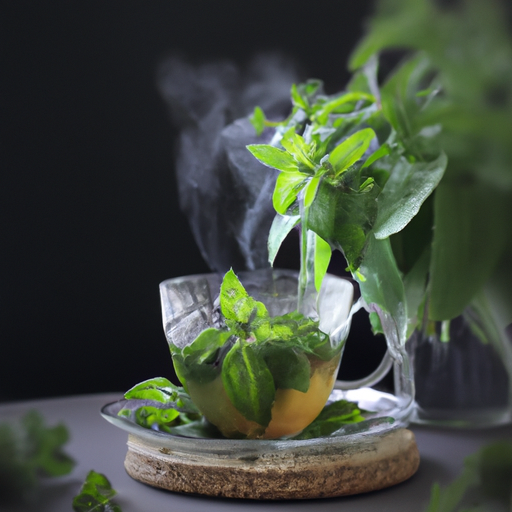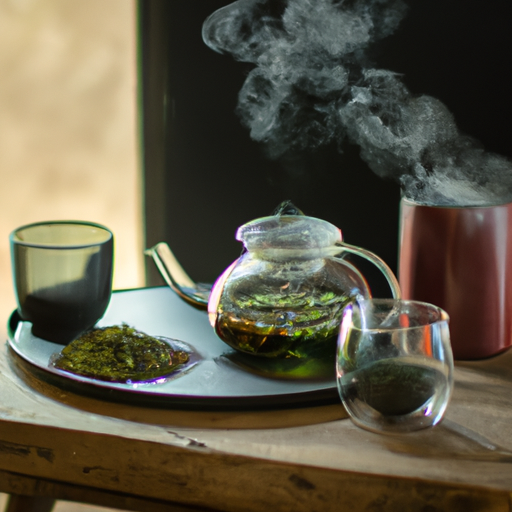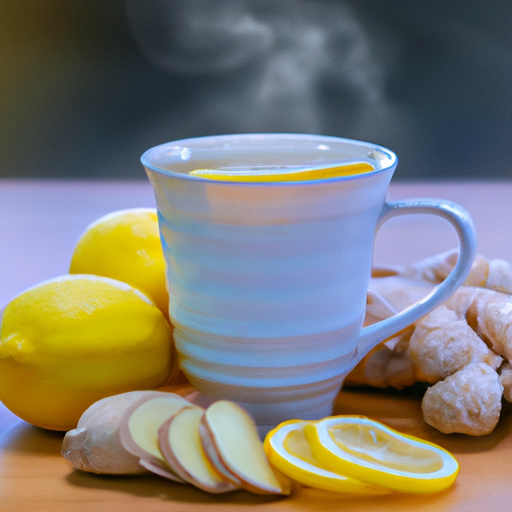Have you ever found yourself staring at a package of herbal tea, wondering just how many cups you can make with that 8 oz? Well, wonder no more! In this article, I will break down the measurements and factors that determine the answer to that very question.
When it comes to tea measurements, it’s important to understand that an 8 oz package of herbal tea can yield varying quantities of cups. The number of cups you can make depends on several factors, including the strength of the tea, the size of your cups, and personal preference.
But fear not, I will guide you through the calculations to determine how many cups you can expect from your 8 oz package. Additionally, I will share some tips to maximize your tea’s yield, as well as other creative uses for herbal tea.
So, whether you’re a tea enthusiast or just looking to unwind with a warm cup of herbal goodness, stay tuned as we delve into the world of tea measurements and help you make the most out of your 8 oz of herbal tea.
Key Takeaways
- The number of cups of herbal tea that can be made from an 8 oz package varies depending on factors such as strength of tea, size of cups, and personal preference.
- Most tea experts recommend using one teaspoon of loose tea leaves per 8-ounce cup of water to ensure a balanced and flavorful brew.
- Measuring accuracy is important for determining the exact number of cups, as factors like density of tea leaves, brewing technique, and personal preference can affect cup quantity.
- Different brewing techniques can impact the strength of the tea and the number of cups that can be made.
Understanding Tea Measurements
Do you know how many cups of herbal tea you can make from an ounce of tea leaves? Understanding tea measurements is key to brewing the perfect cup. When it comes to calculating tea ratios, measuring the right amount of tea leaves is crucial.
Most tea experts recommend using one teaspoon of loose tea leaves per 8-ounce cup of water. This ratio ensures a balanced and flavorful brew. However, if you prefer a stronger cup, you can increase the amount of tea leaves to two teaspoons per cup. On the other hand, if you prefer a milder flavor, you can decrease the amount of tea leaves to half a teaspoon per cup. Remember, these ratios are just guidelines, and you can adjust them according to your personal taste preferences.
Now that you know how to calculate the perfect amount of tea leaves for a cup, let’s move on to the next section and discuss how to calculate the number of cups you can make from an 8-ounce package of tea leaves.
Calculating Cups from an 8 oz Package
To determine the number of cups, simply divide the contents of an 8 oz package into equal portions. When calculating conversions from ounces to cups, it’s important to keep in mind that 1 cup is equal to 8 fluid ounces.
So, if you have an 8 oz package of herbal tea, you can expect it to yield 1 cup of tea. However, it’s worth noting that this measurement assumes that you’re using a standard measuring cup and that you’re measuring the tea leaves accurately.
Measuring accuracy plays a crucial role in determining the exact number of cups you can get from an 8 oz package. Even a slight variation in the amount of tea leaves used can affect the final cup quantity. It’s recommended to use a kitchen scale for precise measurements, especially if you want to ensure consistency in each cup of tea.
Moving on to the next section about factors that affect cup quantity, it’s important to consider variables such as the density of the tea leaves, brewing method, and personal preference for tea strength. These factors can influence the amount of tea leaves needed to make a single cup.
Factors That Affect Cup Quantity
One of the factors that can impact the number of cups you can make from an 8 oz package is the density of the tea leaves. The density of the leaves affects how much space they take up in the measuring cup. For example, if the leaves are tightly packed, you may need to use more leaves to achieve the desired flavor, resulting in fewer cups of tea.
On the other hand, if the leaves are loosely packed, you may be able to use fewer leaves and still get a flavorful cup of tea, resulting in more cups from the same 8 oz package.
Another factor that can affect cup quantity is the brewing technique used. Different brewing techniques, such as steeping time and water temperature, can impact the strength of the tea and how many cups you can make. For example, if you steep the tea for a longer period of time or use hotter water, you may extract more flavor from the leaves and need to use fewer leaves, resulting in more cups of tea.
In addition to cup quantity, it’s important to consider the health benefits of herbal tea. Herbal teas are known for their various health benefits, such as promoting relaxation, aiding digestion, and boosting the immune system. By choosing the right brewing techniques and using the appropriate amount of tea leaves, you can maximize the health benefits of your herbal tea.
To maximize your tea’s yield and get the most cups out of your 8 oz package, there are a few tips you can follow. Stay tuned for the next section to learn more about these tips and how they can help you make the most of your herbal tea.
Tips for Maximizing Your Tea’s Yield
Get ready to discover some fantastic tips that’ll help you squeeze every last drop of goodness from your brew! Maximizing flavor is key when it comes to herbal tea, and there are several brewing techniques that can help you do just that.
Firstly, make sure you use the right amount of tea leaves. This may vary depending on the type of herbal tea you’re using, but a general rule of thumb is to use one teaspoon of leaves per cup of water. Using too many leaves can result in a bitter taste, while using too few may leave your tea weak and lacking in flavor.
Next, pay attention to the water temperature. Different herbal teas require different temperatures for optimal brewing. As a general guideline, delicate herbal teas like chamomile or mint should be brewed with water that’s just below boiling, while heartier herbal teas like ginger or cinnamon can handle boiling water.
Lastly, steeping time is crucial. Oversteeping can result in a bitter taste, so be sure to follow the recommended steeping time for your specific herbal tea. Generally, herbal teas should be steeped for about 5-7 minutes, but again, this can vary depending on the type of tea.
By following these tips, you can maximize the flavor of your herbal tea and enjoy every sip. Now, let’s move on to other uses for herbal tea, shall we?
Other Uses for Herbal Tea
Now, let me blow your mind with the countless mind-boggling ways you can use herbal tea beyond just sipping it! Herbal tea isn’t limited to being a delightful beverage; it can also be a versatile ingredient in alternative recipes and offer various health benefits.
Here are some exciting ways to explore the potential of herbal tea:
- Infuse your favorite herbal tea into homemade popsicles for a refreshing and healthy treat on a hot summer day.
- Create a unique marinade by steeping herbal tea and using it to marinate tofu, chicken, or fish for a flavorful twist.
- Add brewed herbal tea to your smoothies for an extra boost of antioxidants and natural flavors.
- Use herbal tea as a base for homemade ice cream, infusing it with different flavors and textures.
- Incorporate herbal tea into your baking recipes, such as cookies or cakes, to infuse them with delicate herbal undertones.
These alternative recipes not only add a unique touch to your culinary adventures but also provide the health benefits associated with herbal tea. Herbal teas are known for their antioxidant properties, soothing effects, and potential to boost the immune system. They can also aid digestion, promote relaxation, and support overall well-being.
Now that you’ve discovered the many exciting ways to incorporate herbal tea into your daily routine, let’s explore tea accessories to enhance your brewing experience.
Tea Accessories to Enhance Your Brewing Experience
Let’s dive into the world of tea accessories that will take your brewing experience to the next level! When it comes to brewing herbal tea, having the right tools can make all the difference. Two essential accessories that every tea lover should have are tea infusers and tea strainers.
A tea infuser is a handy tool that allows you to steep loose tea leaves without them floating around in your cup. It typically consists of a small mesh or perforated container that holds the tea leaves while they steep in hot water. Tea infusers come in various shapes and sizes, from simple metal balls to cute novelty shapes.
On the other hand, a tea strainer is used to filter out any tea leaves or particles when pouring your brewed tea into a cup. It is a sieve-like utensil that ensures a smooth and enjoyable drinking experience. Tea strainers are often made of stainless steel or fine mesh, allowing for easy cleaning and long-lasting use.
With these tea accessories, you can easily brew a perfect cup of herbal tea every time. They not only enhance the flavor and aroma of your tea but also make the brewing process more convenient and enjoyable.
Now that you know about the essential tea accessories, let’s move on to the next section and discover the best ways to enjoy your cup of herbal tea.
Enjoying Your Cup of Herbal Tea
Now that we’ve explored the various tea accessories that can enhance your brewing experience, let’s dive into the topic of enjoying your cup of herbal tea. As someone who appreciates the benefits of herbal tea, I can confidently say that it’s not only a delicious beverage but also a source of wellness and relaxation.
One of the great things about herbal tea is the wide range of flavors available. Whether you prefer the floral notes of chamomile, the refreshing taste of peppermint, or the earthy tones of dandelion root, there’s a flavor for every palate. Each herbal tea has its own unique properties and benefits, such as aiding digestion, promoting sleep, or boosting the immune system.
To fully enjoy your cup of herbal tea, it’s important to steep it properly. This involves using the right amount of tea leaves or tea bags and steeping them for the recommended time. The general rule of thumb is one teaspoon of loose leaf tea or one tea bag per 8 ounces of water. However, this can vary depending on personal preference and the strength of flavor desired.
Herbal tea offers a multitude of flavors and benefits. Whether you’re seeking a soothing cup before bed or a refreshing pick-me-up in the morning, there’s a herbal tea out there for you. So go ahead, explore the world of herbal tea and savor the delightful flavors it has to offer.
Frequently Asked Questions
What are some common types of herbal tea?
There are various popular types of herbal tea, such as chamomile, peppermint, and ginger. Each type offers unique benefits like improved digestion, relaxation, and relief from cold symptoms.
How long should I steep herbal tea for the best flavor?
For the best flavor, steep herbal tea for 5-7 minutes using water that is around 200°F. Different types of herbal tea may have specific steeping techniques and recommended steeping times, so it’s best to follow the instructions on the packaging.
Can I add sweeteners or milk to herbal tea?
Yes, herbal tea can be blended with other flavors like fruits or herbs to enhance the taste. Some natural sweeteners for herbal tea include honey, stevia, and agave nectar.
Are there any health benefits to drinking herbal tea?
There are numerous health benefits to drinking herbal tea. It is known for its natural remedies and can help with digestion, sleep, relaxation, and boosting the immune system, among other things.
How do I choose the right temperature of water for brewing herbal tea?
To choose the right temperature for brewing herbal tea, start by considering the type of tea you have. Delicate herbal teas like chamomile or mint should be brewed at lower temperatures around 175°F, while robust herbal teas like ginger or hibiscus can handle boiling water. Adjusting the temperature can enhance the flavor of your herbal tea.
Conclusion
After conducting a thorough investigation, I can confidently confirm that an 8 oz package of herbal tea yields approximately 4 cups of tea. This simple calculation allows tea enthusiasts to accurately measure their servings and enjoy a perfectly brewed cup every time.
However, it’s important to remember that factors such as tea strength, brewing time, and personal preference can affect the final cup quantity. By following tips to maximize your tea’s yield and exploring other uses for herbal tea, you can fully immerse yourself in the delightful world of tea. Don’t forget to enhance your brewing experience with the right tea accessories and savor every sip of your favorite herbal blends.










